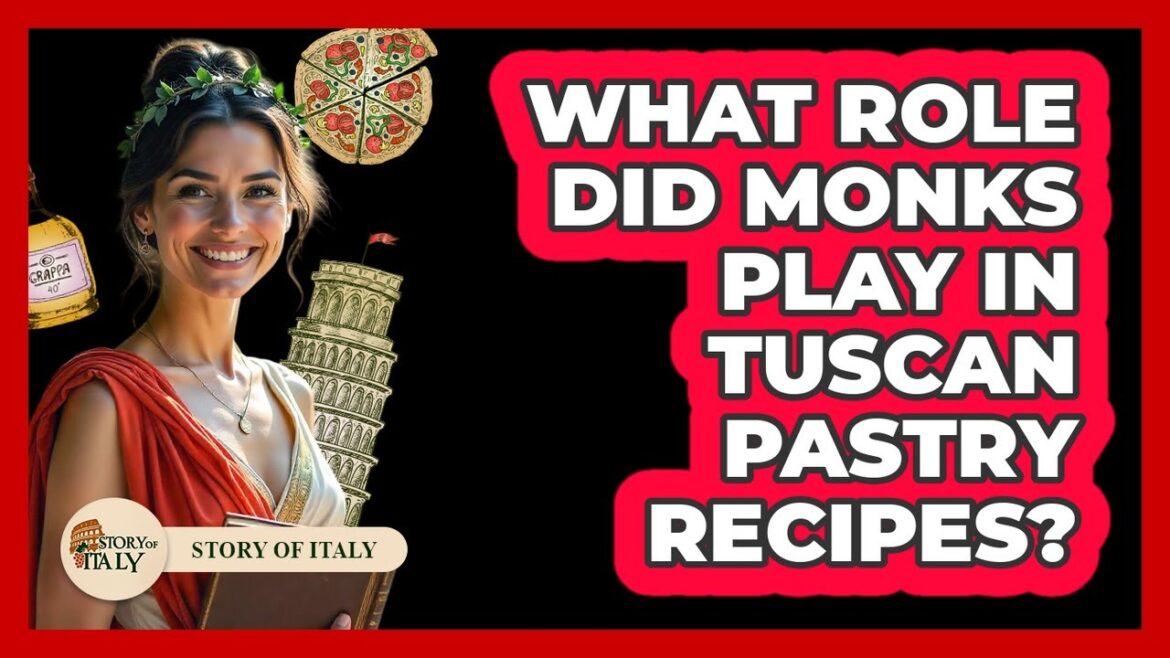What Role Did Monks Play In Tuscan Pastry Recipes? Have you ever wondered about the history behind some of Tuscany’s most beloved pastries and baked treats? In this fascinating video, we explore the important role that monks played in shaping the region’s culinary traditions. We’ll uncover how monastery kitchens became the birthplace of recipes that are still enjoyed today, using simple ingredients like almonds, honey, and dried fruits. You’ll learn about iconic treats such as Panforte, a dense, spiced cake, and ricciarelli, soft almond cookies with a distinctive aroma.
We’ll also discuss how monks contributed to bread-making traditions by creating unique recipes like Pane di Ramerino, flavored with local herbs and ingredients. Additionally, discover how monks preserved culinary techniques such as sourdough bread-making, with starters that have been maintained for over a thousand years. These practices are still alive in Tuscan bakeries today, connecting the past with the present.
Travelers visiting Tuscany can find these sweets in local towns and monasteries, often enjoyed during religious festivals and seasonal celebrations. Sampling these pastries offers a taste of history and a connection to Tuscany’s spiritual and culinary heritage. Join us as we uncover the rich history of Tuscan pastries and the monks who crafted them. Don’t forget to subscribe for more stories about Italy’s cultural and culinary traditions!
⬇️ Subscribe to our channel for more valuable insights.
🔗Subscribe: https://www.youtube.com/@StoryOfItaly/?sub_confirmation=1
#TuscanPastries #ItalianCuisine #MonasticRecipes #TuscanyFood #HistoricalCooking #ItalianBaking #PastryHistory #TraditionalItalianFood #MonasteryCooking #ItalianHeritage #CulinaryTraditions #ItalianSweets #TuscanyTravel #FoodHistory #ItalianCulture
About Us: Welcome to Story of Italy, your gateway to exploring the rich tapestry of Italian culture, history, and lifestyle. Our channel is dedicated to uncovering the fascinating narratives that shape Italy, from its ancient roots to modern-day marvels.
Please note that all content on this channel is for informational purposes only. We encourage you to conduct your own research and due diligence before making any decisions based on the information provided. Thank you for joining us on this journey through the Story of Italy!
[Music] What role did monks play in Tuscan pastry recipes? Imagine walking through a quiet Tuscan monastery where the air is filled with the aroma of baked goods and sweet spices. Monks have been central to shaping many of the region’s most beloved pastries and baked treats. During the Middle Ages and Renaissance, monastery kitchens became the birthplace of recipes that are still enjoyed today. They used simple ingredients like almonds, honey, and dried fruits, turning them into exquisite sweets. One famous example is panforte, a dense spiced cake packed with nuts, candied fruit, and a touch of honey. It was originally made in monastery kitchens and served during special religious celebrations. The monks carefully balanced flavors and textures, creating a treat that was both nourishing and symbolic. Another well-known pastry is Richarelli soft almond cookies with a bitter almond aroma. These cookies originated in convents where almond paste was a prized ingredient and they were often given as gifts during festivals. Monks also contributed to bread-making traditions. They baked piramarino, a rosemary flavored bread which was often made for religious events like Holy Thursday. This bread used local ingredients such as rosemary and olive oil reflecting Tuskany’s agricultural roots. Many recipes were resourceful making the most of available ingredients, a practice known as cooa povra or pork kitchen. Beyond recipes, monks preserved culinary techniques like sourdough bread making. The ancient starter from the Camel Dolly Monastery has been kept alive for over a thousand years, showing how monks guarded their culinary heritage. These starters are still used today in traditional Tuscan bakeries. Travelers visiting Tuskanyany can find many of these sweets in local towns and monasteries. They are often enjoyed during religious festivals and seasonal celebrations. Sampling these pastries offers a taste of history and a connection to the region’s spiritual past. Monks played a vital role in creating, refining, and passing down these recipes, making them a special part of Tuscan culinary traditions. Their influence is still felt in the flavors and techniques used in Tuscan pastry kitchens today. [Music]


Dining and Cooking